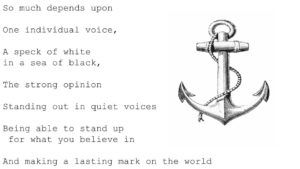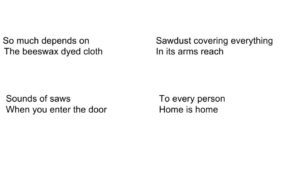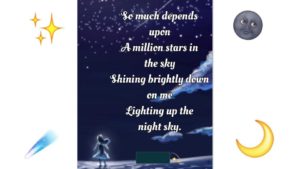English and Yearbook Teacher, Sonoma Valley High School, Sonoma, CA. Aug. 2016-present
Exploring Identity Through Independent Reading Novels (Aug.-Sept. 2019)
The two essential questions I build my English 2 curriculum around are:
- How do we become who we are? How do we develop our identity?
- What’s our role and responsibility within society?
I decided to start off the year with my College Prep classes exploring the first question through book clubs for independent reading books. Our school is 39% white and 55% Latinx, yet our core novels and plays for English 2 are all written by white male authors and published before 1960. It seemed necessary to explore this question through books that better reflected our student body.
Over the summer, I successfully funded my second book-related DonorsChoose grant, which together brought multiple copies of 13 new and diverse independent reading book titles to my students.
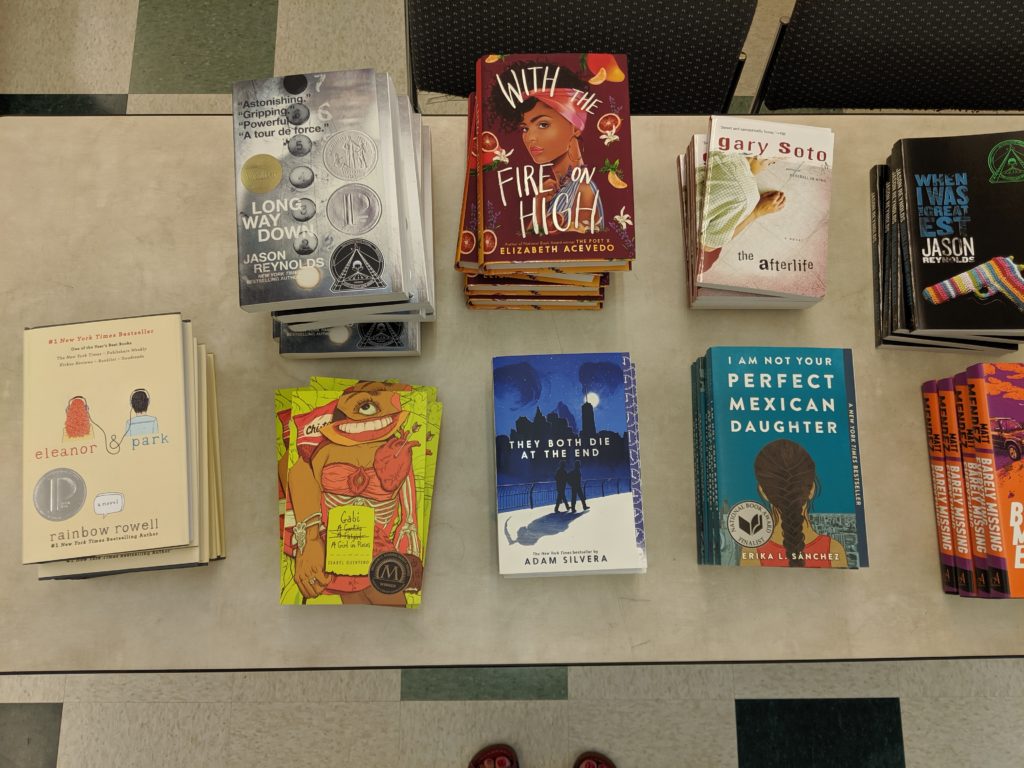
Since my students participated in weekly independent reading book club groups for most of their freshman year, I started off by inviting students to determine the norms for our book clubs, choosing the rules that worked well from the previous year and offering them an opportunity to change the things that weren’t successful.
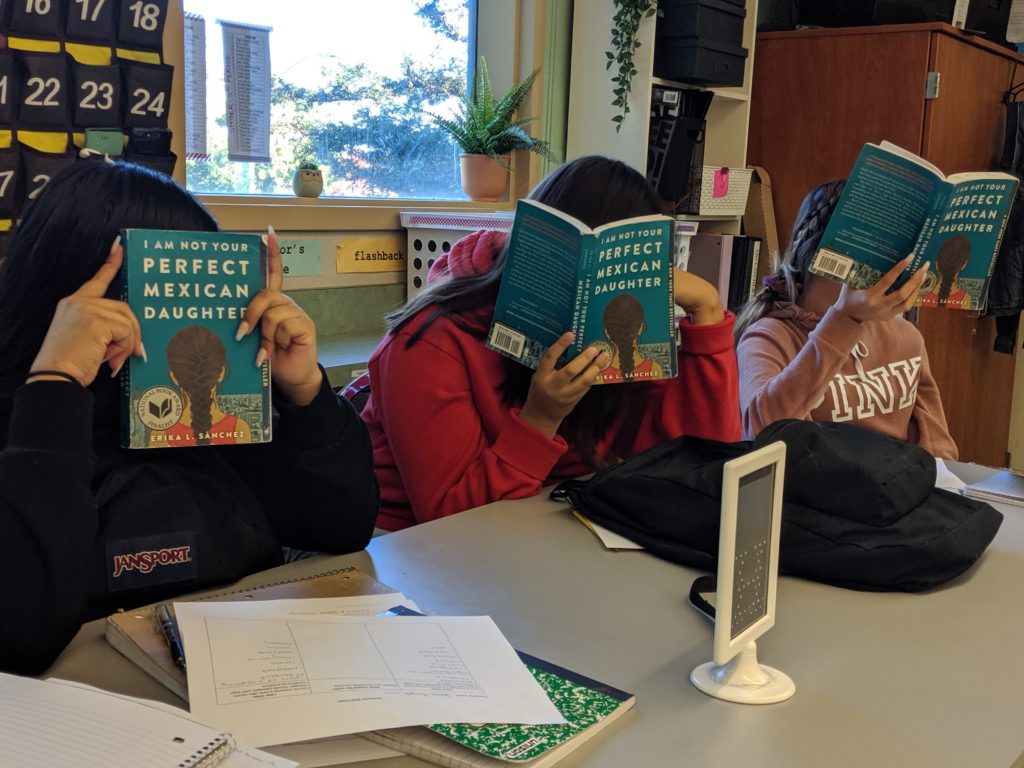
In the weekly self-directed discussions, students grappled with the issues in the books, helped each other resolve confusion, and shared their favorite moments. Many found themselves connecting to the characters and stories.
My assessments for this unit included:
- An ongoing reading journal. Students were expected to write something about the book every time they read. Each week, the book clubs worked collaboratively to add still more analysis to their journals in the form of identity charts to track the people and things that influence the main character and character shift charts to track how and why the main character changes through the book.
- A character head. This visual project (which I did not create) helped students creatively express their interpretation of the main character’s identity.
- A character shift paragraph. This paragraph grew out of the work we did in class on the identity chart (tracking a character’s influences) and the character shift chart (identifying why and how a character changes through the book). This was an informative early assessment for my students’ writing at the beginning of the year. See unedited excerpts below.
Excerpts from the character shift paragraphs (unedited)
- What made Brianna [from On the Come Up]be a stronger person is society, childhood, school life, home life, and music. The society made her who she is by influencing her to not be as shy and more outgoing, more people started noticing her from her rap battle that went viral and she felt some type of way that she’s never felt before, she felt powerful. Her childhood was pretty rough because her dad was murdered when she was four years old and her mom then turned to drugs and became an addict.
- In They Both Die At The End by Adam Silvera, Mateo changes from being cowardly to thankful and safe because of meeting his last friend Rufus. When Mateo first gets the call, he hides at home. However, he signs up for this app which is where he meets Rufus and that is when things start to change. Rufus brings out this side in Mateo that he never thought he had. This change is first shown when Rufus encourages Mateo to leave his house. Mateo hears a knock at the door and starts to panic.“Different nerves hit me all at once: what if it’s not Rufus, even though no one else should be knocking at my door this late at night?” (89). The reason for all this hectic behavior is caused by Mateo letting his fears take control. He is too busy thinking about worst possible scenarios instead of realizing that not only Rufus comes in peace but also he is there to make a good last day with Mateo.
- In ¨ I am not your Perfect Mexican Daughter ¨ by Erika L. Sanchez, Julia the main character changed from being a self-obsessed to a more open minded person after her sisters death and the occurences that happened afterwards, that would change her life forever. In the beggining of the book Julia is stubborn and would complain about having a perfect sister that she was compared too everyday, she would argue with her parents and was not happy about living in a mexican heritage home. ¨I dont understand why everyone just complains about who I am. What am I suppost to do? Say im sorry ? Im sorry I can’t be normal? Im sorry im such a bad daughter? I’m sorry i hate the life I have to live?¨.
When the unit was over, the last thing we had to do was to write thank-you notes to the donors who made it possible for us to get these books. Here are some of my favorite things my students shared with our generous donors:
- “[I Am Not Your Perfect Mexican Daughter] was very sad because some Mexican daughters can relate to trying to be a typical Mexican daughter.”
- “I relate with Emoni [from With the Fire on High] when she talks about her relationship with her dad, and it made me feel that I wasn’t the only one feeling that way towards my dad.”
- “[With the Fire on High] kinda reminded me of my mother and how she was pregnant at a very young age and had a lot of responsibilities to take care of me and my brother.”
- “[They Both Die at the End] made me wonder what I would do with my last 24 hours.”
The Final Word Project
The Final Word Project is my favorite final assignment. It allows students to process all our work on the two essential questions (How do we develop our identity? and What’s our role and responsibility within society?) and to put their own spin on it.
I’ll update this section soon with more details on the assignment but in the meantime, here are some examples of the work that was submitted for the essays and self-portraits that are the culminating assessments for this unit (and the year).
Final Word Essay examples (Note: The 2017-2018 version of this assignment was called the ABU Theme Project):
- Final Word Essay Example 1 (Honors, 2019)
- Final Word Essay Example 2 (Honors, 2019)
- Final Word Essay Example 3 (Honors, 2019)
- ABU Theme Project 1 (College Prep, 2018)
- ABU Theme Project 2 (College Prep, 2018)
- ABU Theme Project 3 (Honors, 2018)
Final Word Self-Portrait, Spring 2019






Literary Terms Wheel
Over the course of the year, English 2 students learn 20 (College Prep) or 22 (Honors) literary terms, including simile, metaphor, allusion, apostrophe, and irony. The culminating project is the Literary Terms Wheel, in which students choose a theme (the center circle), list the terms (next circle), write the definitions (next circle), and provide an original example of the literary term that connects to the theme. Note: I did not create this assignment; it has been used at SVHS for years.
2018-2019 (Click on image to enlarge it)
TQE: Thoughts, Questions, Epiphanies
In my first year of teaching, I relied far too heavily on reading questions. After that year, I swore to find activities that would encourage students to dig back into the reading in a more self-directed way. During the 2018-2019 year, I tried Marisa Thompson’s TQE strategy with my Honors classes to discuss The Catcher in the Rye and Night. First, students discuss the text in groups of 3-4 students, using their notes from the previous night’s reading. As they discuss, they use a different color pen to annotate their notes with new insights, questions that arise, or alternate interpretations.
At the end of the small group discussion, each group chooses their top three thoughts, questions, or epiphanies, and then writes them on the board. We then open the discussion up to the whole class, like a Socratic Seminar. A student moderator leads the discussion, starting with the TQEs on the board. I coach the moderator to make sure that he or she keeps the discussion inclusive and moving at an appropriate pace.
Here are some of the TQEs from The Catcher in the Rye, chapters 4-7:
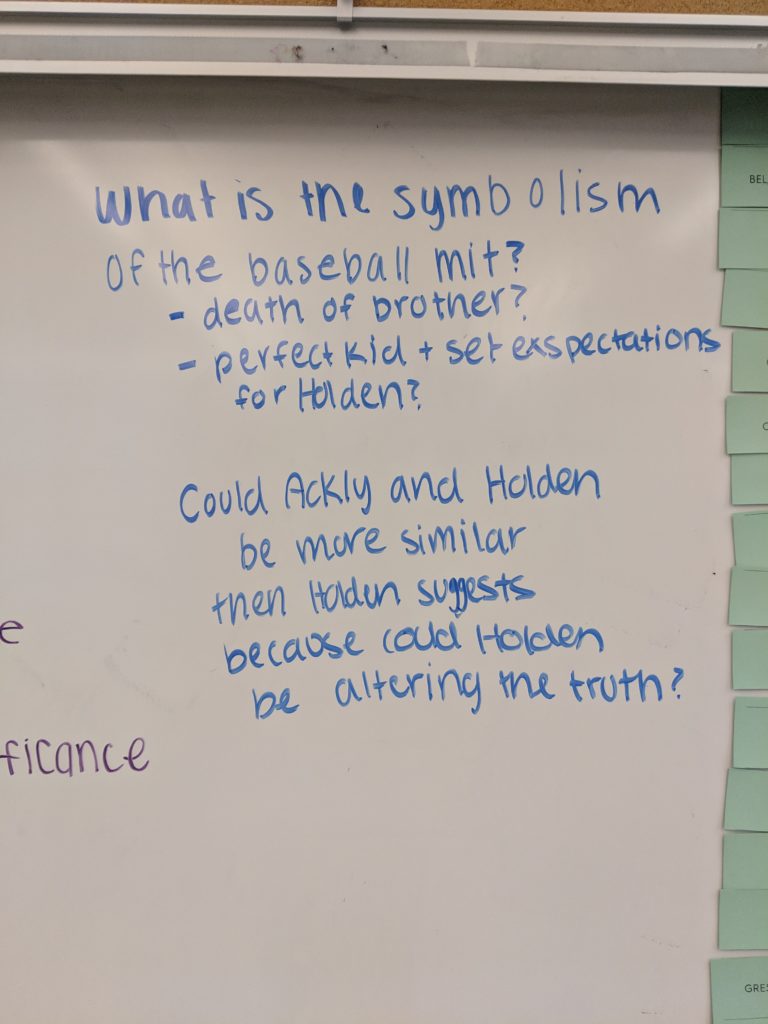

Student Teaching, Kenilworth Junior High, Petaluma, CA. Aug. 2015-June 2016
What it takes to make you great
All seventh graders at Kenilworth Junior High work on an EWRC unit on summary writing that uses an abridged version of the Fortune article “What It Takes to Be Great” as the source. The article is based on a study that found that experts in their fields, like Tiger Woods and Warren Buffet, weren’t necessarily born with natural talent, but had to deliberately practice in order to get great. The study found that this specific kind of practice, rather than innate ability, was what determined someone’s success.
A great message, right? Unfortunately, after the summary was written, students moved on and didn’t have a chance to apply the ideas to their own life. For this age group in particular, I thought it was important to ask them to make that connection. So I designed a two-part assignment in which they would choose some specific area in which they wanted to improve and apply the lessons of the article to come up with a practice plan for themselves. We also added a visual component (a slide, poster, in-class demonstration, or short video) that students presented in front of the class.
As one of the first assignments of my student teaching semester, this was a great way to get to know my students better. But the students also really got into it. For now, I’ve posted my lesson plan as I taught it, which includes some notes on what my mentor teacher and I would have done differently the next time. Someday I hope to edit it to make it more of a final version.
Deliberate Practice Plan lesson plans
What It Takes to Make You Great assignment sheet and samples
SO much depends: imagery and poetry writing
Many teachers use William Carlos Williams’s poem “The Red Wheelbarrow” as an introduction to poetry writing. It works because it’s effective. I based my lesson largely on my SSU professor Susan Hirsch’s demonstration lesson as well as Corbett Harrison’s many ideas around teaching the poem.
In our poetry unit, this one-day learning segment fell after my mentor teacher introduced the ideas of simile and metaphor by analyzing song lyrics. A few of the elementary schools in our district have very strong emphases on poetry, so some students came into the unit with very advanced analytical skills. Others, however, hadn’t had much experience with poetry. This segment worked for the full range of students.
After reading the poem, I asked students to do a quickwrite, then a quick partner discussion on this question:
- What does this poem mean to you? What does it make you picture, feel, remember, or think?
In phrasing the question this way, and emphasizing the second part of it, students felt free to respond with their first impression. And they had a wide variety of responses, including deep analyses of possible extended metaphors in the poem, photographic descriptions of the scene surrounding the red wheelbarrow, and frustrated questions about what it meant (“I know it has to mean something, but I can’t figure it out and it’s making me mad.”)
I explained Williams’s background and his belief that everyday things could be poem-worthy. From there, we analyzed the structure of the “Red Wheelbarrow” and prepared to write our own “So Much Depends” poems. I asked how many students hated writing poetry, then said, “This is a poetry-writing assignment for you.”
The assignment followed Williams’s basic structure: “So much depends on” followed by three to five short, simple, descriptive lines. Students had the rest of the class period to write.
When students brought their poems in the next class, I was amazed at students’ creativity. Many of these poems were beautiful, with clever word choices that, intentionally or not, implied metaphors and deeper meanings. It felt that, by focusing on such a short piece and heavily structuring the poem, students had enough boundaries to get over the fear of a blank page (“It’s only three images,” I would tell them).
We had students create Google Presentation slides, so they could add more layers of meaning by typesetting and illustrating their poems. Students could opt-out of the class slideshow (or participate anonymously).
Were I to teach this again, I would tie it in with more explicit instruction on imagery in poetry and using all five senses in writing and reading. But overall, both my mentor teacher and I were impressed by the level of creativity we saw in students’ poems and in their slides.
So Much Depends (minimalist lesson plan)
Samples of student work
